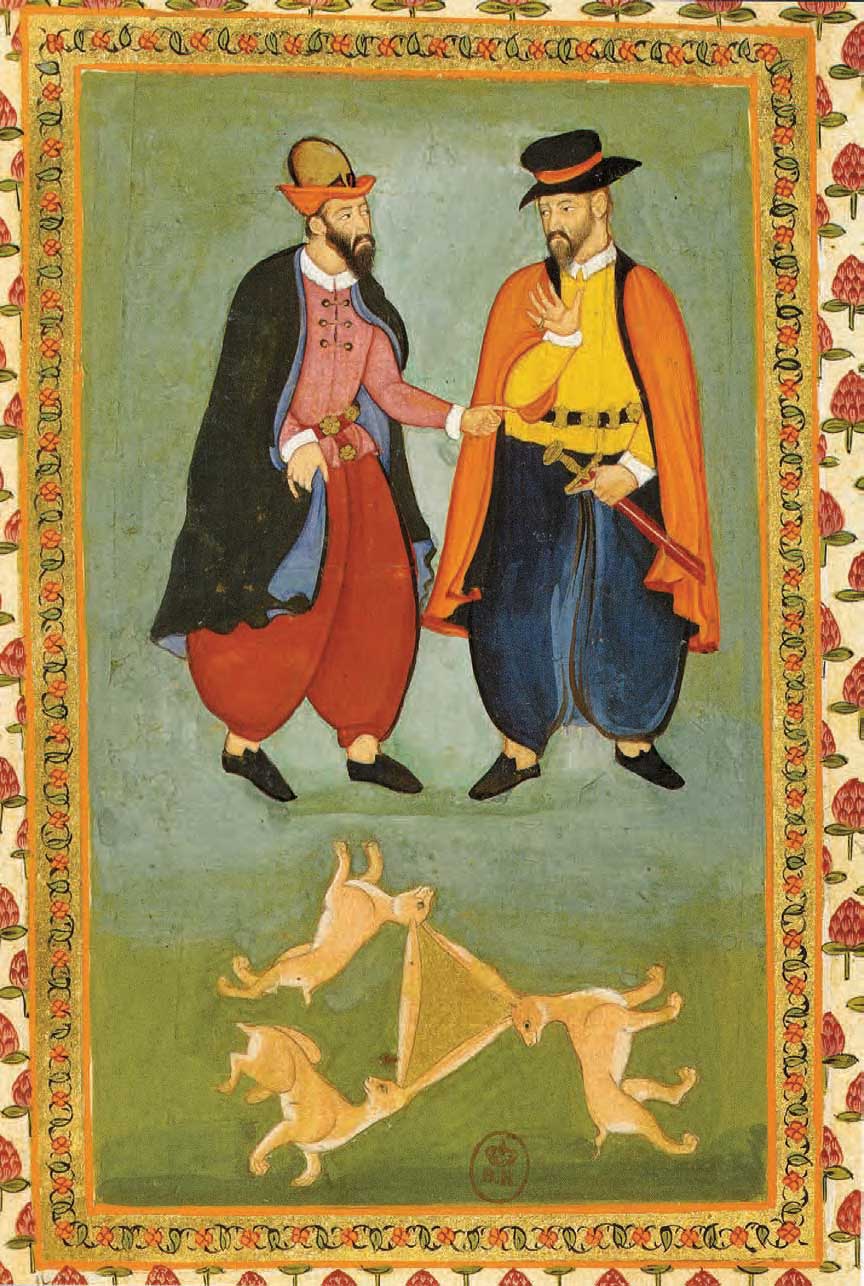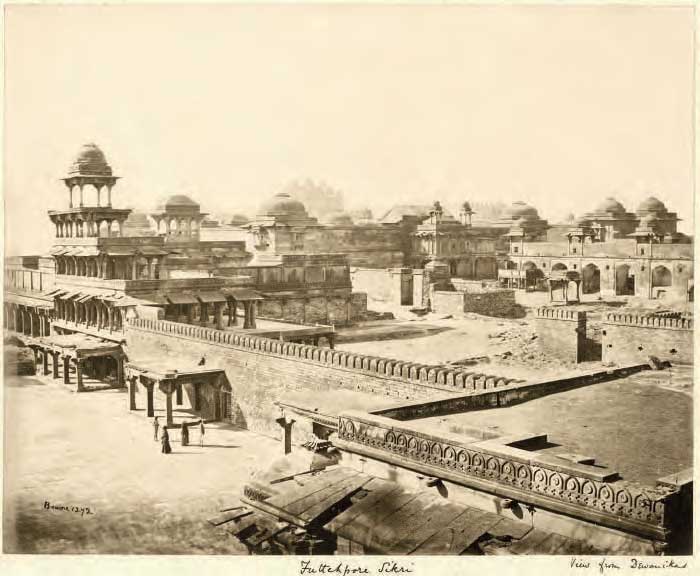11
Three Moghul Hares
But the Three Hares also have a life of their own in North India, which is independent of the Buddhist tradition yet reaches out to the west. Take one Indian Moghul Emperor – Akbar (1556–1605), two Portuguese Jesuit priests, three hares and a skilled Indian court painter and you have a slight mystery. Who were the men? How on earth did they get invited to one of the most powerful courts in the world? Why, exactly, were they there? And how did the Three Hares come to be included as well? What was their purpose and how did the painting get painted in the first place, and when? Were the three hares brought by the Portuguese priests or ambassadors or were they there already in India? The hares have a certain upper class air to them. Are they Portuguese or Moghul hares? or were they copied from paintings, drawings or even textiles?
In a recent exhibition the catalogue which features these Three Hares concludes that the Three Hares are ‘only decorative and are probably of no significance!’ Certainly there is historical record of two Goan Portuguese Jesuits reaching Fatehpur Sikri on 28 February 1580 – Father Rudolf Acquaviva (1550–1583) son of the Duke of Atri, and Father Anthony Monserrate. Fatehpur Sikri was Akbar’s capital about a hundred miles south of Delhi and thirty miles west of Agra.31 The Jesuit priests were accompanied by Brother Francis Henriques who may have acted as interpreter, as he had been born in Persia. Farsi and Urdu are very similar. They brought many fine gifts including European textiles, Portuguese costumes and musical instruments as well as some heavy duty bibles and prayer books. In the painting the two Portuguese missionaries look as if they have gone a bit native, which in the summer near Agra is no surprise, for they would have been sweltering in their doublet and hose.

‘Two Portuguese in conversation,’ gouache on paper with a floral Moghul border, c1580, artist unknown. © Bibliothèque nationale de France
Two of the most famous Moghul painters at that time were Kesu Das (active 1570–1590) and Manohar (active 1580–1620). It is highly probable that one of these two men in fact made the painting. Akbar would have put his best artists on the job to record the visit of important foreigners.
He encouraged his painters to incorporate new ideals of realism and perspective which he so admired in the new imported European paintings.
Akbar was also keen to stimulate religious debate; every Thursday night for many years learned debates and expositions were held in his court between scholars and holy men – Sunnis and Sufis, Shiahs, learned men from Khorasan, Iraq and Transoxiana, doctors, theologians, and even the odd philosopher thrown in for good measure. When Akbar heard that there were Christian missionaries in Goa he sent for them to liven up the debate, which is how they were invited to his court in the first place.32
Akbar was not averse to Christians. Lady Juliana, believed to be a sister of one of Akbar’s Armenian wives, was a doctor in the royal harem, which at its peak at Fatehpur Sikri, consisted of around five thousand women, of whom three hundred were his ‘real’ wives, guarded by an army of eunuchs. The Three Hares were definitely outnumbered.33

Fatehpur Sikri, Agra, Uttar Pradesh, India, 1870 photo by Samuel Bourne34
Diplomatically the Portuguese mission was successful. Friendly relations were maintained and their presence at court was an intriguing ‘curiosity worth regarding’ in its own right. The Jesuits stayed three years but made no headway with converting Akbar to Christianity. Realising the futility of their intentions the priests then left.35
So if the two Jesuits in the painting are the two Portuguese ambassadors then the painting can be dated between 1580 and 1583. If it is later than that, they would have been with a later Portuguese mission and have been painted in Lahore. So the three up-market Moghul hares may in fact be Portuguese Jesuit hares that travelled to India from Portugal via Goa on textiles. I think that the picture is almost certainly from the Moghul court when it was at Fatehpur Sikri which dates it to c1580–1583.